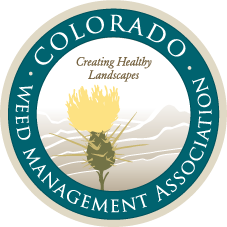Weed Information
Noxious Weeds – What Are They and Where Did They Come From?
Noxious weeds are plants that are not native to our area. Most have come from Europe or Asia either accidentally or as ornamentals that have escaped. These plants have an advantage because the insects, diseases, and animals that would normally control them are not found here. Because these plants have developed specialized mechanisms to survive, they are able to spread at an alarming rate.
- Purple loosestrife can produce 2-3 million seeds per plant every year
- Orange hawkweed has developed hairy leaves that most animals will not eat.
- Leafy spurge contains a sap that may cause blisters in the mouth of cattle and wildlife. The animals will eat desirable vegetation but will leave the Leafy spurge.
- 75% of a Canada thistle plant is underground.
Noxious Weeds
Noxious Weeds and Our Natural Areas
Noxious weeds are moving into our valued ecosystems and displacing our native plants at an alarming rate. When the plants that wildlife uses for food, shelter, or nesting are gone, the wildlife leave the area.
Noxious Weeds and Our Agricultural Lands
Noxious weeds also impact our valuable agricultural lands and commodities. When resources are not available for their desired use, it takes more land to raise the same number of cattle or bushels of wheat.
How They Move
Noxious weeds are spread by man, animals, water, and wind. Prime locations for noxious weeds to become established are disturbed sites such as roadsides, sites cleared for construction, areas that are overused by animals or humans, wetlands, and riparian corridors. Noxious weeds also hitchhike on vehicles, equipment, and in commodity shipments.
- Leafy spurge seeds are expelled from their seed capsule and can fly up to 30 feet.
- Houndstongue seeds have tiny hooks that attach to fur and clothing.
- Diffuse knapweed breaks off at the base and acts as a tumbleweed. It is often found lodged in the underside of vehicles that have driven over the dried plants.
- Eurasian watermilfoil can easily be transported on fishing equipment.
Eradication, Control, Containment
Eradication – When populations of noxious weeds that are not normally found in Colorado, or are only found in small areas, are discovered, they need to be eradicated. By eliminating a noxious weed when the population is small, you save time, money, and effort in the long run.
Control – If a noxious weed is found in substantial numbers in some parts of the state but not others, a “line in the sand” will be drawn to establish management areas. It may be feasible to eradicate small outlier populations.
Containment – Some weeds are found in such large numbers that it is no longer realistic to think we will be able to rid the state of their presence. Instead we will aim to stop their spread.
Control Methods
Species of noxious weeds grow or spread differently, and Colorado’s Noxious Weed Act requires certain methods of control to be used depending on the level of control that is mandated.
Below are examples of Integrated Pest Management techniques.
- Biological control – Uses organisms to control noxious weeds. Since we are dealing with living things, a variety of circumstances come into play that impact the success of the establishment of the bio-control and ultimately the control of the noxious weed you are targeting. For example, an organism that works well on the plains may not work in the mountains. Although there has been some success on some noxious weeds, bio-control agents are not available for all species.
- Chemical control – The use of herbicides to control noxious weeds. All herbicides must be used in accordance with the registered label.
- Cultural control – The use of materials or techniques that reduce noxious weed populations. Examples include mulching, rotational grazing, establishing good vegetation cover.
- Mechanical – Cutting, mowing, disking.
Remember, not all techniques will work in all situations. Refer to the Colorado Department of Agriculture for required control levels. Consult with your local weed manager or Licensed Commercial Applicator for specific recommendations.
What You Can Do
Familiarize yourself with what noxious weeds in your area look like. Work with other landowners to identify the extent of weed populations and plan control work. Encourage your local agencies to educate landowners about the threat and damage done by these aggressive invaders.
We Can All Help Maintain Our Ecosystem
As land users and managers, we need to protect our natural resources. We must increase awareness and education about the adverse effects of noxious weeds. If we are diligent in our efforts, we will protect a balanced ecosystem for the enjoyment and perpetuation of future generations.

